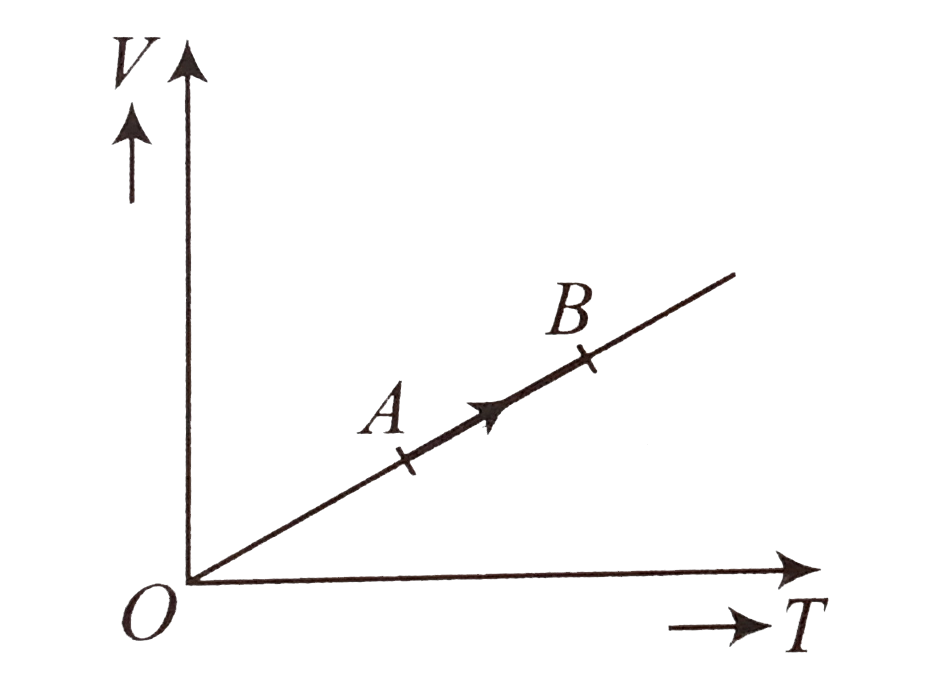If one mole of gas doubles its volume at temperature T isothermally then work done by the gas is
−RTloge4
RTloge2
−RTlog102
RT
The correct Answer is:B
To solve the problem of calculating the work done by one mole of gas that doubles its volume at a constant temperature T during an isothermal process, we can follow these steps:
1. Understand the Isothermal Process:
- An isothermal process is one in which the temperature remains constant. For an ideal gas, the work done during an isothermal expansion or compression can be calculated using the formula:
W=nRTln(V2V1)
where:
- W = work done by the gas,
- n = number of moles of gas,
- R = universal gas constant,
- T = absolute temperature,
- V1 = initial volume,
- V2 = final volume.
2. Identify Initial and Final Volumes:
- According to the problem, the gas doubles its volume. If we let the initial volume V1 be V, then the final volume V2 will be:
V2=2V
3. Substitute Values into the Work Formula:
- We know that n=1 mole (as given in the problem). Now substituting n, R, T, V1, and V2 into the work done formula:
W=1⋅R⋅T⋅ln(2VV)
4. Simplify the Expression:
- The V terms in the logarithm cancel out:
W=RT⋅ln(2)
5. Final Result:
- Therefore, the work done by the gas when it doubles its volume is:
W=RTln(2)
Final Answer:
The work done by the gas is W=RTln(2).
---
- An isothermal process is one in which the temperature remains constant. For an ideal gas, the work done during an isothermal expansion or compression can be calculated using the formula:
W=nRTln(V2V1)
where:
- W = work done by the gas,
- n = number of moles of gas,
- R = universal gas constant,
- T = absolute temperature,
- V1 = initial volume,
- V2 = final volume.
- According to the problem, the gas doubles its volume. If we let the initial volume V1 be V, then the final volume V2 will be:
V2=2V
- We know that n=1 mole (as given in the problem). Now substituting n, R, T, V1, and V2 into the work done formula:
W=1⋅R⋅T⋅ln(2VV)
- The V terms in the logarithm cancel out:
W=RT⋅ln(2)
- Therefore, the work done by the gas when it doubles its volume is:
W=RTln(2)
The work done by the gas is W=RTln(2).
Topper's Solved these Questions
Similar Questions
A gas expands isothermally and reversibly. The work done by the gas is
View SolutionIn a process the pressure of a gas is inversely proportional to the square of the volume. If temperature of the gas increases, then work done by the gas:
View SolutionIn a process the pressure of a gas is inversely proportional to the square of the volume. If temperature of the gas increases, then work done by the gas:
View SolutionOne mole of and ideal monoatomic gas is compressed isothermally in a rigid vessel to double its pressure at room temperature, 27∘C . The work done on the gas will be :
View Solution5 mole of an ideal gas of volume is expanded against vaccum to make its volume 2 times, then work done by the gas is:
View SolutionOne mole of an ideal gas at temperature T expands slowly according to the law pV= constant.
Its final temperature is T2. The work done by the gas is
View SolutionOne mole of an ideal gas at temperature T expands slowly according to the law pV= constant.
Its final temperature is T2. The work done by the gas is
View SolutionOne mole of an ideal gas at temperature T expands slowly according to the law pV= constant.
Its final temperature is T2. The work done by the gas is
View SolutionThe volume (V) of a monatomic gas varies with its temperature (T) as shown in the graph. The ratio of work done by the gas, to the heat absorbed by it, when it undergoes a change from state A to state B,is

View SolutionTwo moles of an ideal gas is contained in a cylinder fitted with a frictionless movable piston, exposed to the atmosphere, at an initial temperature T0. The gas is slowly heated so that its volume becomes four times the initial value. The work done by gas is
View Solution
